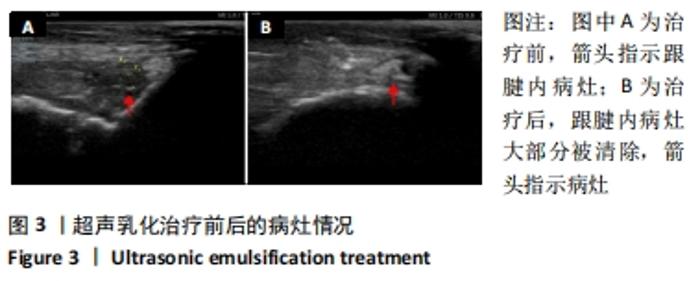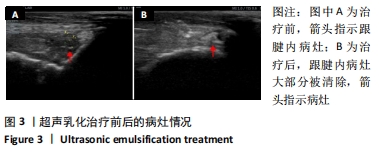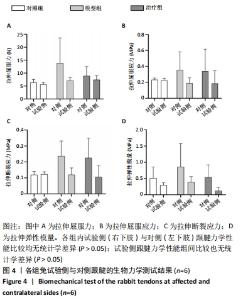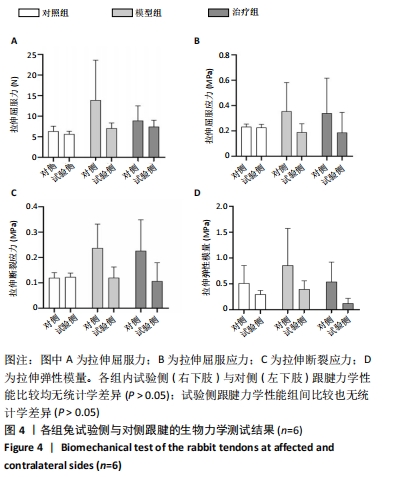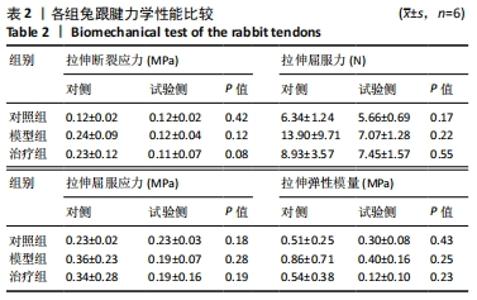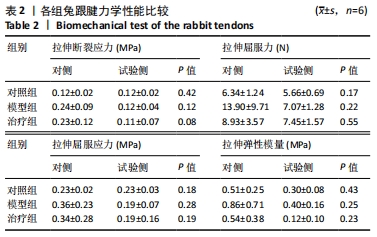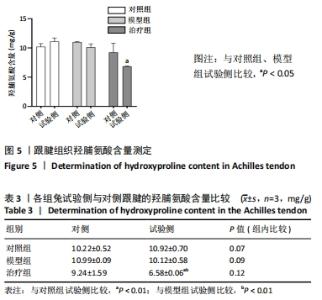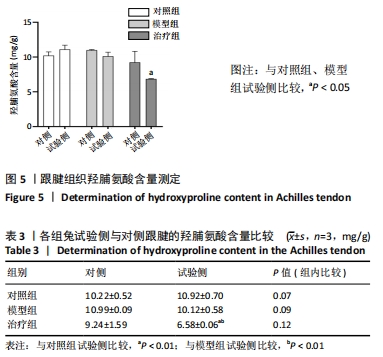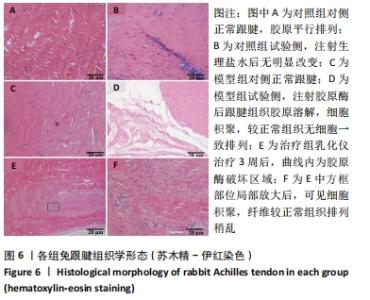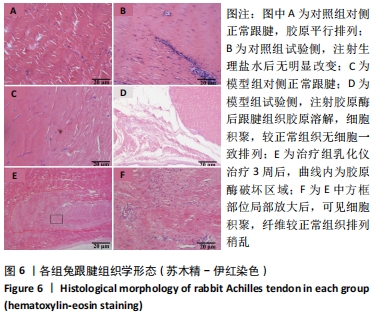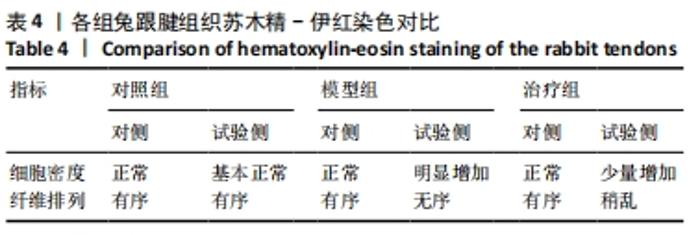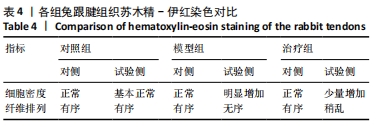[1] FEDERER AE, STEELE JR, DEKKER TJ, et al. Tendonitis and Tendinopathy: What Are They and How Do They Evolve. Foot Ankle Clin. 2017;22(4): 665-676.
[2] ALBERS IS, ZWERVER J, DIERCKS RL, et al. Incidence and prevalence of lower extremity tendinopathy in a Dutch general practice population: a cross sectional study. BMC Muscoskelet Disord. 2016;17:16.
[3] NOBACK PC, FREIBOTT CE, TANTIGATE D, et al. Prevalence of Asymptomatic Achilles Tendinosis. Foot Ankle Int. 2018;39(10):1205-1209.
[4] WANG CL, CHEN PY, YANG KC, et al. Ultrasound-Guided Minimally Invasive Surgical Resection of Retrocalcaneal Bursitis: A Preliminary Comparison With Traditional Open Surgery. J Foot Ankle Surg. 2019; 58(5):855-860.
[5] CHEN YJ, WANG CJ, YANG KD, et al. Extracorporeal shock waves promote healing of collagenase-induced Achilles tendinitis and increase TGF-beta1 and IGF-I expression. J Orthop Res. 2004;22(4):854‐861.
[6] DE GIROLAMO L, MORLIN AMBRA LF, PERUCCA ORFEI C, et al. Treatment with Human Amniotic Suspension Allograft Improves Tendon Healing in a Rat Model of Collagenase-Induced Tendinopathy. Cells. 2019;8(11):1411.
[7] FRANKA KS, SU SANN M, AYSHA S, et al. Different achilles tendon pathologies show distinct histological and molecular characteristics. Int J Mol Sci. 2018;19:404
[8] CARDOSO TB, PIZZARI T, KINSELLA R, et al. Current trends in tendinopathy management. Best Pract Res Clin Rheumatol. 2019;33(1): 122-140.
[9] MILLAR NL, AKBAR M, CAMPBELL AL, et al. IL-17A mediates inflammatory and tissue remodelling events in early human tendinopathy. Sci Rep. 2016;6:27149.
[10] SUGG KB, LUBARDIC J, GUMUCIO JP, et al. Changes in macrophage phenotype and induction of epithelial-to-mesenchymal transition genes following acute Achilles tenotomy and repair. J Orthop Res. 2014; 32:944-951.
[11] MIN HK, KWON OS, OH SH, et al. Platelet-derived growth factor-BB-immobilized asymmetrically porous membrane for enhanced rotator cuff tendon healing. Tissue Eng Regen Med. 2016;13(5):568-578.
[12] UZUN C, ERDAL N, GURGUL S, et al. Comparison of the Effects of Pulsed Electromagnetic Field and Extracorporeal Shockwave Therapy in a Rabbit Model of Experimentally Induced Achilles Tendon Injury. Bioelectromagnetics. 2021;42(2):128-145.
[13] DEDES V, MITSEAS A, POLIKANDRIOTI M, et al. Achilles tendinopathy: Comparison between shockwave and ultrasound therapy. Int J Physical Edu Sports Health. 2020;7(4):239-243.
[14] ELMALLAH R, ELATTAR EB. Extracorporeal Shockwave versus Musculoskeletal Mesotherapy for Achilles Tendinopathy in Athletes. Ann Rheum Dis. 2019;78(Suppl 2):1922-1923.
[15] NIRMALA MJ, DURAI L, RAO KA, et al. Ultrasonic Nanoemulsification of Cuminum cyminum Essential Oil and Its Applications in Medicine. Int J Nanomedicine. 2020;15:795-807.
[16] MALONEY E, KHOKHLOVA T, PILLARISETTY VG, et al. Focused ultrasound for immuno-adjuvant treatment of pancreatic cancer: An emerging clinical paradigm in the era of personalized oncotherapy. Int Rev Immunol. 2017;36(6):338-351.
[17] LEE MH, CLEARY G, WEBSTER DL. Survey on anaesthesia used for phaco-emulsification cataract surgery: A needs analysis for teaching topical-intracameral anaesthesia to ophthalmology trainees. Clin Exp Ophthalmol. 2019;47(8):1101-1102.
[18] LUNGU E, GRONDIN P, TÉTREAULT P, et al. Ultrasound-guided tendon fenestration versus open-release surgery for the treatment of chronic lateral epicondylosis of the elbow: protocol for a prospective, randomised, single blinded study. BMJ Open. 2018;8(6):e021373.
[19] CHIMENTI RL, STOVER DW, FICK BS, et al. Percutaneous Ultrasonic Tenotomy Reduces Insertional Achilles Tendinopathy Pain With High Patient Satisfaction and a Low Complication Rate. J Ultrasound Med. 2019;38(6):1629-1635.
[20] OBST SJ, HEALES LJ, SCHRADER BL, et al. Are the Mechanical or Material Properties of the Achilles and Patellar Tendons Altered in Tendinopathy? A Systematic Review with Meta-analysis. Sports Med. 2018;48(9):2179-2198.
[21] SCHILLIZZI G,ALVITI F, D’ERCOLE C, et al. Evaluation of plantar fasciopathy shear wave elastography: a comparison between patients and healthy subjects. J Ultrasound. 2020. doi: 10.1007/s40477-020-00474-7.
[22] OOI CC, SCHNEIDER ME, MALLIARAS P, et al. Diagnostic performance of axial-strain sonoelastography in con frming clinically diagnosed Achilles tendinopathy: comparison with B-mode ultrasound and color Doppler imaging. Ultrasound Med Biol. 2015;41(1):15-25.
[23] CHIMENTI RL, BUCKLIN M, KETZ J, et al. Insertional Achilles tendinopathy associated with altered transverse compressive and axial tensile strain during ankle dorsifexion. J Orthop Res. 2017;35(4):910-915.
[24] KIM DH, CHOI JH, PARK CH, et al. The Diagnostic Significance of Ultrasonographic Measurement of the Achilles Tendon Thickness for the Insertional Achilles Tendinopathy in Patients with Heel Pain. J Clin Med. 2021;10(10):2165.
[25] TRAN PHT, MALMGAARD-CLAUSEN NM, PUGGAARD RS, et al. Early development of tendinopathy in humans: Sequence of pathological changes in structure and tissue turnover signaling. FASEB J. 2020;34(1):776-788.
[26] VIEIRA CP, DE OLIVEIRA LP, DA RÉ GUERRA F, et al. Glycine improves biochemical and biomechanical properties following inflammation of the achilles tendon. Anat Rec (Hoboken). 2015;298(3):538-545.
[27] SAMIRIC T, PARKINSON J, ILIC MZ, et al. Changes in the composition of the extracellular matrix in patellar tendinopathy. Matrix Biol. 2009; 28(4):230-236.
[28] KATSMA MS, PATEL SH, ELDON E, et al. The influence of chronic IL-6 exposure, in vivo, on rat Achilles tendon extracellular matrix. Cytokine. 2017;93:10-14.
|
